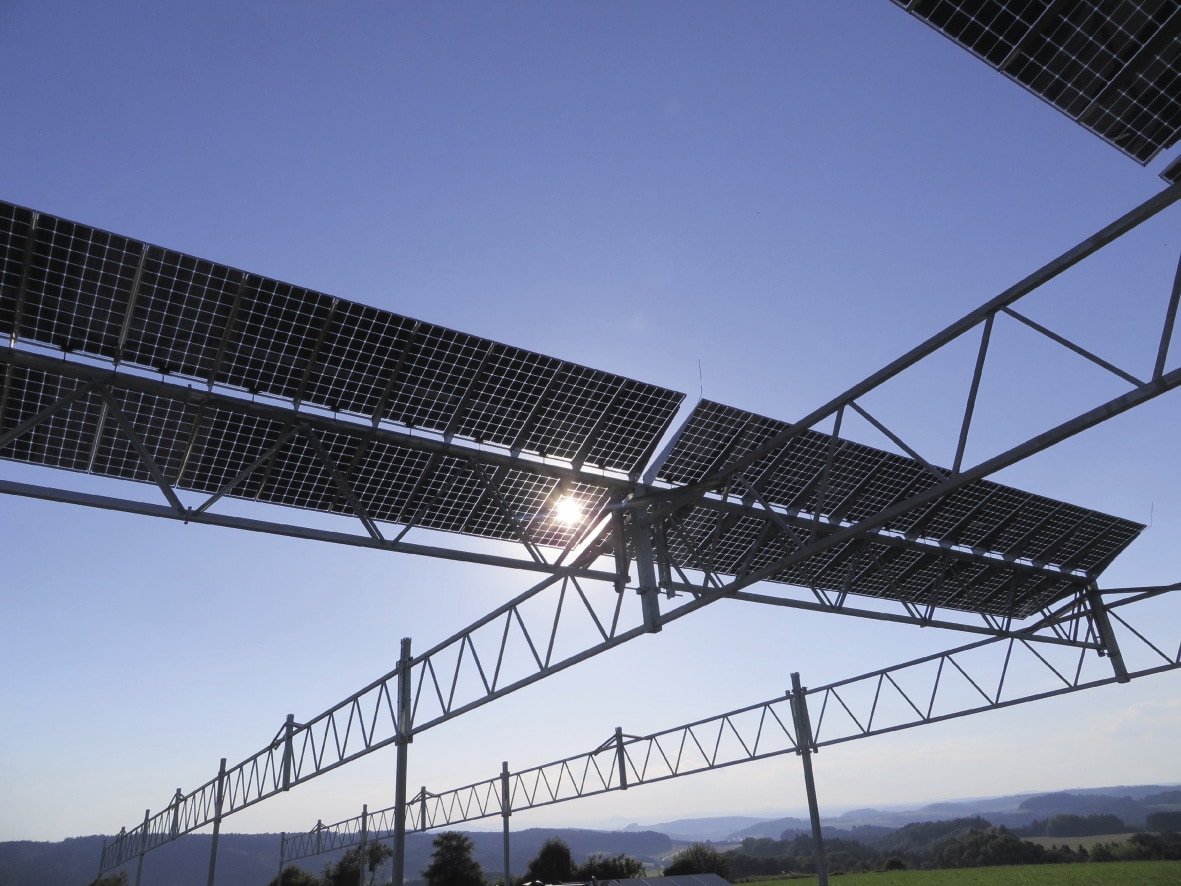From pv magazine Global
Researchers from the Electrical Energy Systems and Applications (ELECTA) division of KU Leuven in Belgium have developed a geospatial methodology to estimate the optimal ground coverage ratio (GCR) of elevated agrivoltaic systems on arable land in the European Union.
The GCR describes the ratio of the PV system area to the overall area of the array and arable land. This currently stands at around 28% of Europe, and is defined as all land in which there are temporary field crops and pastures.
The proposed method involves four different steps. First, it uses environmental, climate and agricultural parameters to segment a given area into small sections and then it defines the PV system and crop type. In the third step, it provides the dimensioning of the PV system based on the local climatic parameters and desired crop light level. Lastly, it estimates key performance indicators such as energy yield, levelised cost of energy (LCOE), and the benefits in comparison with separated production.
The scientists applied this methodology to three different crop types – shade-tolerant crops like potatoes and sugar beets and shade-intolerant crops like maize.
“The GCR significantly changes related to the chosen shade tolerance of the crop,” the scientists explained, noting that a higher shade tolerance and higher GCR results in a higher energy production rate per unit of land. “Consequently, caution should be taken in the field crop rotation system: a fixed agrivoltaic system (with fixed GCR) will need every year a crop with similar light requirements.”
The researchers said low light requirements and high PV density will result in a higher LCOE.
“Agrivoltaic installations are financially more attractive and competitive for shade-loving crops (like leafy vegetables), leading to a risk that farmers will shift their production system and less shade-intolerant crops will be cultivated,” they explained.
The scientists singled out potato cultivation, which currently covers around 1% of Europe’s available agricultural area, mostly in countries such as Belgium, the Netherlands, Germany, Poland and Romania. They said potatoes could be a potential driver for agrivoltaic growth, with the potential for around 1,290 GW of PV capacity. They said that elevated systems with larger coverage ratios may be more suitable for southern European countries, due to high solar radiation levels.
The also warned policymakers to establish guidelines on the maximum PV ground coverage ratio before implementing agrivoltaic support schemes.
“The absolute technical potential (MWp) is many times higher and mainly impacted by the existing cultivated area of a specific crop type where permanent grassland and cereals have the largest share,” they said. “Nevertheless, important challenges remain to be addressed in terms of research on crop growth (modelling) and clear policy implementation guidelines.”
The researchers described their geospatial methodology in “Geospatial assessment of elevated agrivoltaics on arable land in Europe to highlight the implications on design, land use and economic level” which was recently published in Energy Reports.
This content is protected by copyright and may not be reused. If you want to cooperate with us and would like to reuse some of our content, please contact: editors@pv-magazine.com.









1 comment
By submitting this form you agree to pv magazine using your data for the purposes of publishing your comment.
Your personal data will only be disclosed or otherwise transmitted to third parties for the purposes of spam filtering or if this is necessary for technical maintenance of the website. Any other transfer to third parties will not take place unless this is justified on the basis of applicable data protection regulations or if pv magazine is legally obliged to do so.
You may revoke this consent at any time with effect for the future, in which case your personal data will be deleted immediately. Otherwise, your data will be deleted if pv magazine has processed your request or the purpose of data storage is fulfilled.
Further information on data privacy can be found in our Data Protection Policy.